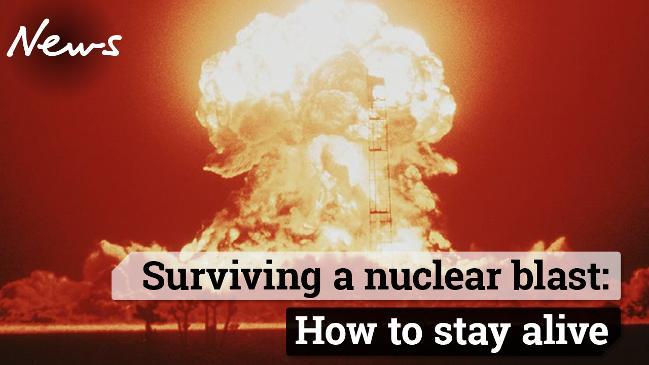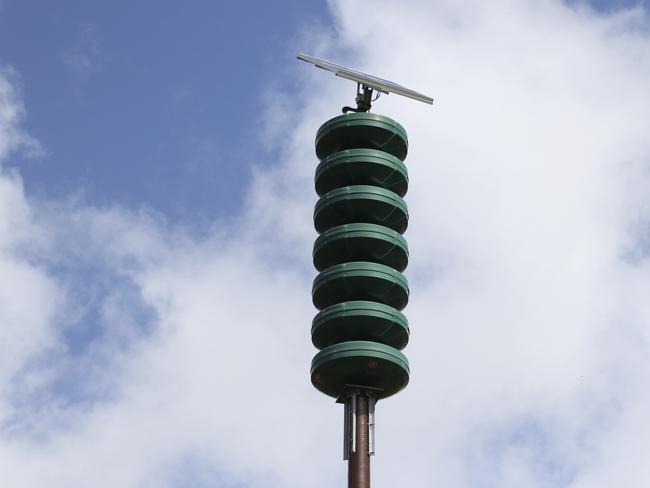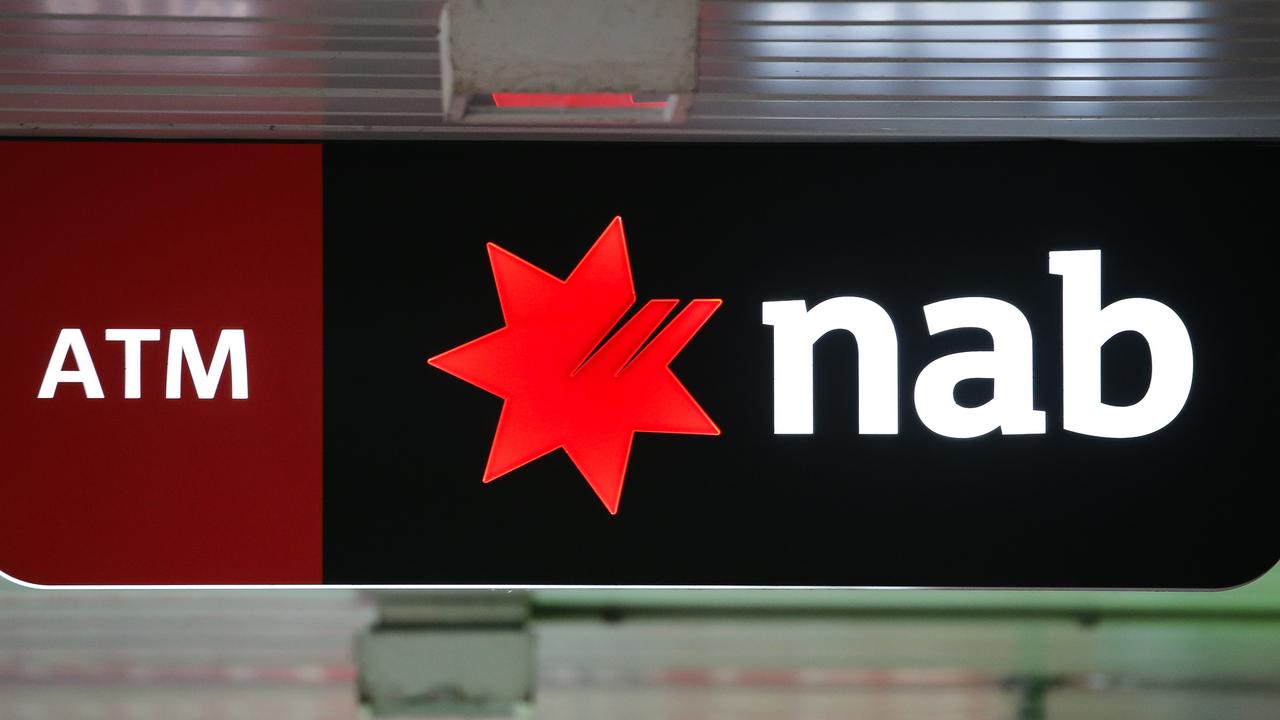Employee responsible for Hawaii’s false missile alert ‘feels bad’
A HORRIBLE error by one government employee sent Hawaii into a panic, as residents thought they were about to die.

EARLIER this month, the main reasons the good smartphone users of Hawaii would reach for their devices and fire up Google was to find out when the latest Star Wars film was showing and how their teams were doing in the NFL playoffs.
On Saturday morning, that all changed.
Searches spiked for a very specific and disturbing guide: How to survive a nuclear attack.
The surge in queries came as an emergency alert was — we now know — mistakenly sent to everyone in the island state.
“BALLISTIC MISSILE THREAT INBOUND TO HAWAII. SEEK IMMEDIATE SHELTER. THIS IS NOT A DRILL,” the alert, sent at 8.07am read.
For almost 40 full minutes until a cancellation message was issued, people thought they were going to die. Panic ensued, crowds ran to get as far from the shore as they could, people cried and screamed in the streets.
For some, survival instincts kicked in — others turned to their favoured search engine.
EMPLOYEE RESPONSIBLE ‘FEELS BAD’
While the message was a false alarm there was one part that was kind of true. It wasn’t a drill, it was simply the result of a guy pressing the wrong button.
And that guy, a civil defence employee who was involved in a warning test of the state’s emergency alert system — the ireless emergency alert — now “feels terrible”.
Hawaii’s emergency management administrator Vern T Miyagi yesterday indicated the man responsible was dealing with some deep regret.
“This guy feels bad, right. He’s not doing this on purpose — it was a mistake on his part and he feels terrible about it,” Mr Miyagi said in a press conference on Saturday.
He said the employee would “be counselled and drilled so this never happens again”.
The retired Army major general explained that a twostep process to send an alert was completed, rather than triggering a system test, which was what the employee was supposed to do.

When triggering an actual alert, the person who carries it out tells the system that is what they want to do, and then confirms it.
“There is a screen that says: Are you sure you want to do this?” Mr Miyagi said, indicating that the man confirmed to the system, triggering panic across the state over a missile threat from North Korea.
As well as sending the citizens of Hawaii into a panicked frenzy, the false alert highlighted major problems with the state’s emergency warning system.
While a lone employee could easily send an alert effectively telling citizens their lives were about to end, no one could figure out how to quickly take it back.
‘WE WERE NOT PREPARED’
It took 38 minutes to send out another message. “There is no missile threat or danger to the State of Hawaii. Repeat. False Alarm.”
Hawaii Governor David Ige said there was no process in place to send out a message saying the warning had been a false alarm.
“You know, we were not prepared for that, the fact that an alert was issued that was incorrect,” he said. “So we have built that now.”

A timeline released by the state’s defence department said three minutes after the message was sent, at 8.10am, US Pacific Command and the Honolulu Police Department were told there had been a false alarm.
At 8.13am, the initial message was cancelled so that those out of range would not receive it at a later time.
At 8.20am a notification was posted to Hawaii Emergency Management Agency’s social media channels, and the Governor gave them a retweet.
It wasn’t until 8.45am, after “getting authorisation from FEMA Integral Public Alert and Warning System”, that the agency issued the follow-up “Civil Emergency Message” that there was no missile threat.
‘HOW DOES THIS HAPPEN?’
Surfer Kelly Slater, who was in Hale’iwa on Oahu’s north shore, was dumbfounded at receiving the two messages 38 minutes apart.
“How does this happen?” he asked on Instagram, sharing a screenshot that showed the contradictory alerts.
“What took 38 mins to correct that ‘mistake’ via a follow up warning? Did a missile get launched and blow out of the sky and do we have Star Wars defence capabilities?
“Who has their finger on the text button to send out an alarm like that (never mind it being 8am to start your day like that)?”
Slater pondered the political situation that had led to fear about such an attack from North Korea, questioning whether it was US President Donald Trump or North Korean Kim Jong-un who was the “bigger antagoniser in this back and forth”.
“It’s a weird little game people play with each other and other people’s lives. I think we all want some answers but given the trust the average person I know has in government agencies, the answer will sound like more cover up than sensible response,” he wrote.
Slater’s frustration was echoed around the world, and was quickly redirected towards Mr Trump, whose first tweet following the alert was an attack on “fake news” concerning a book written about the President himself.
When his office did eventually address the false alarm, this was the statement: “The President has been briefed on the state of Hawaii’s emergency management exercise. This was purely a state exercise.”
TESTING HALTED
The department said it was now taking steps to make sure the process was improved so such a mistake couldn’t happen again.
The process required to issue such an alert — both tests and actual warnings — will now be carried out by two people rather than one.

And the EMA will “hold off” on testing the system, “until we get this squared away”, Mr Miyagi said.
The department and the governor have apologised profusely for causing what Governor Ige described as “a day that most of us will never forget”.
“I know first-hand how today’s false alarm affected all of us here in Hawaii, and I am sorry for the pain and confusion it caused. I, too, am extremely upset about this and am doing everything I can do to immediately improve our emergency management systems, procedures and staffing,” he said.
It not known whether the employee responsible for issuing the false alert will be disciplined.




